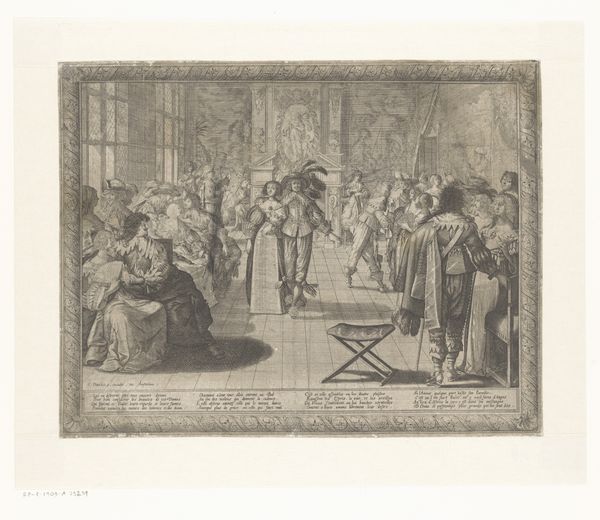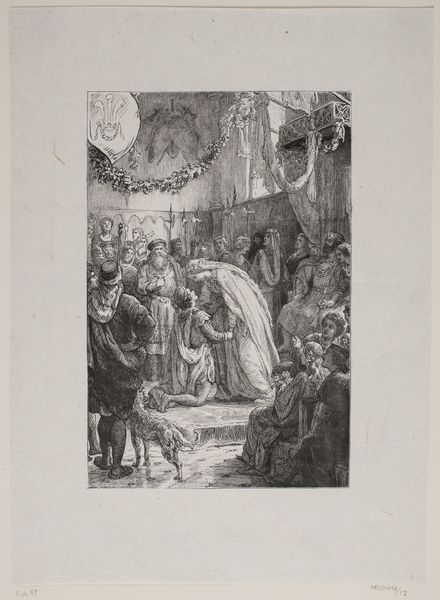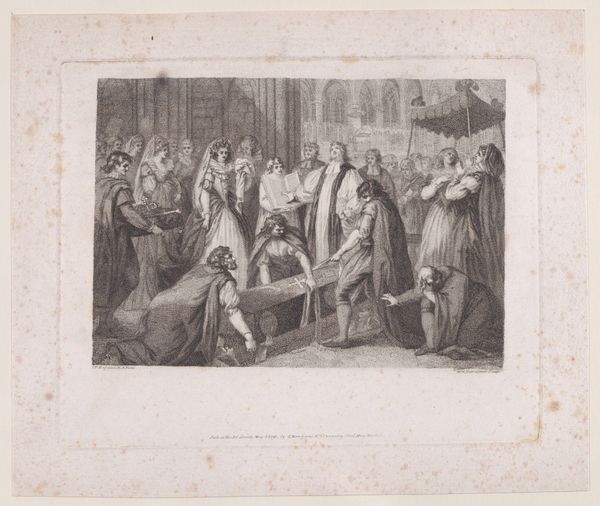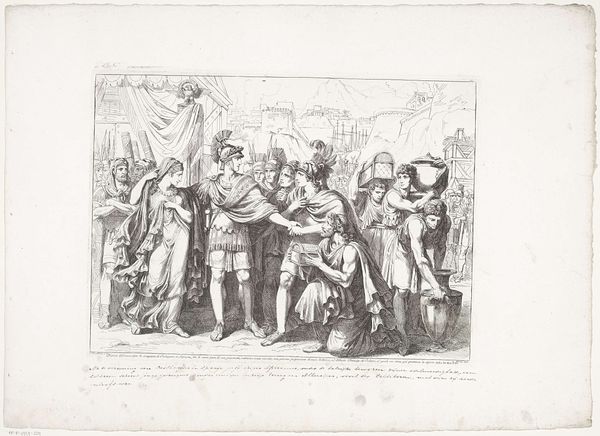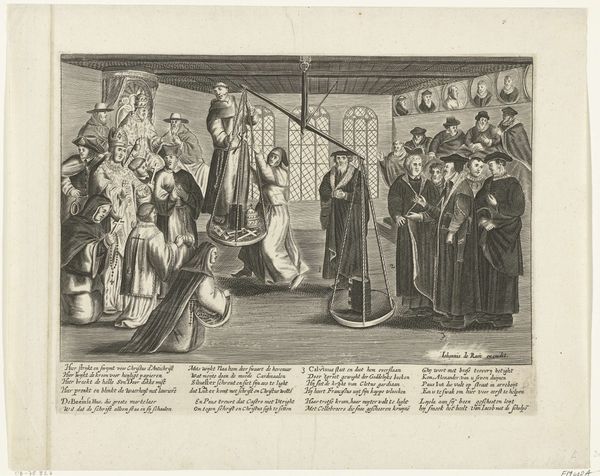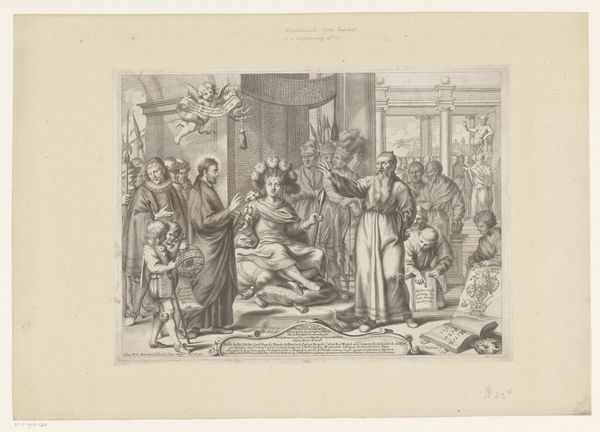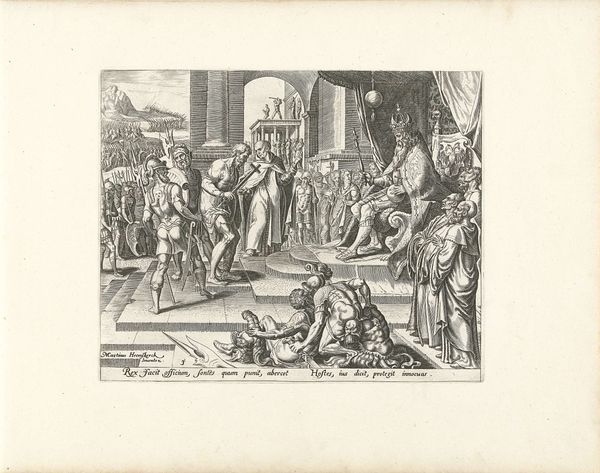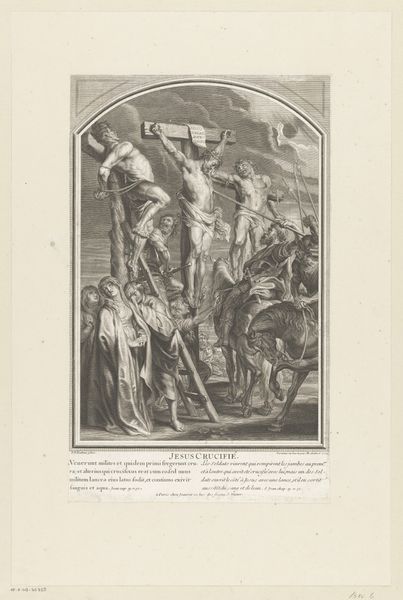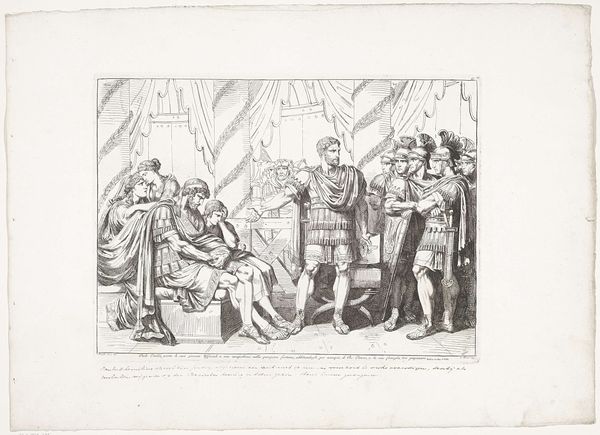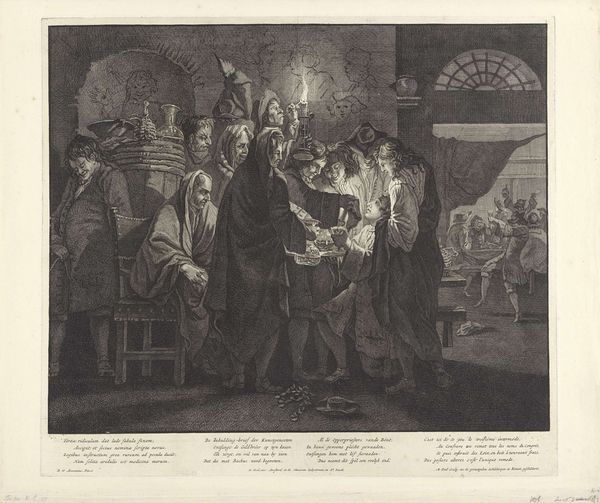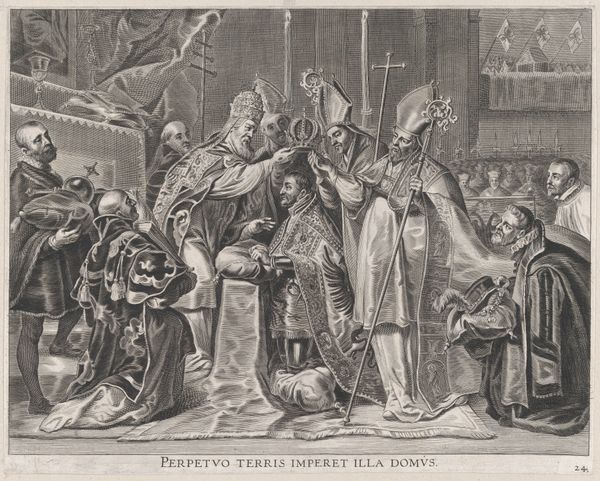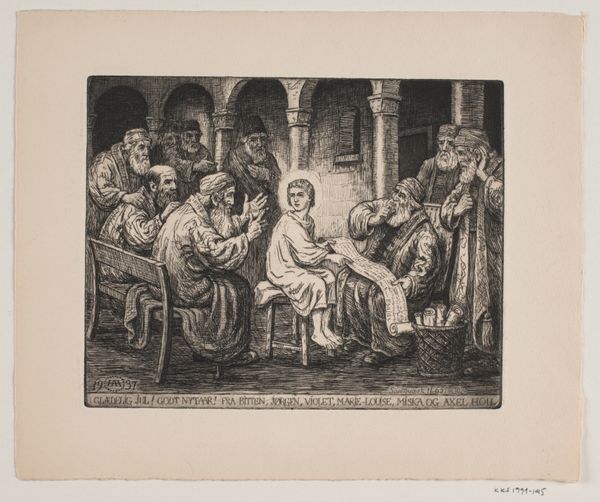
Karel V tot keizer gekroond door de paus; intocht van Ferdinand te Gent in 1635 (nr. 24) Possibly 1635 - 1685
0:00
0:00
pieterdeiijode
Rijksmuseum
print, engraving
#
portrait
#
baroque
# print
#
old engraving style
#
history-painting
#
engraving
Dimensions: height 268 mm, width 335 mm
Copyright: Rijks Museum: Open Domain
Editor: This is a print by Pieter de Jode II, made sometime between 1635 and 1685, depicting Karel V being crowned by the Pope. There’s an almost photographic quality to the detail achieved through the engraving; what can we learn by looking closely at the 'how' and 'why' of its creation? Curator: We must look to the printmaking process. Consider the labor involved in creating this intricate image, and who would have had access to it. The act of reproducing images democratizes them, taking power away from unique objects available only to the elite, and giving it to the masses through reproducibility. Editor: So, the print as a medium inherently shifts power dynamics? How does that tie into the depiction of the coronation itself? Curator: Absolutely. Consider the material value: while the event showcases immense wealth and authority, the engraving is relatively cheap to produce and distribute. The very act of its creation challenges the exclusivity of power by making the image accessible. This isn't just a representation of authority, but a comment on its relationship with mass consumption and dissemination. What do you think that motto at the bottom contributes? "Perpetuo terris imperet illa domus." Editor: That "that house should forever rule the world." So it presents an argument while simultaneously leveling the playing field? Curator: Precisely! The engraving is itself a commodity and by looking at who commissioned, created, and consumed the image, we gain a fuller understanding of the print’s purpose. Also, thinking about this period of increased access through printmaking allows us to reflect on the systems involved in shaping perceptions of power in the 17th Century. Editor: It's fascinating to see how a single print opens up discussions about social structures. I now realize this print acts as a powerful artifact of cultural consumption as well as a declaration of power. Curator: Indeed. Examining the material conditions of its creation, distribution, and reception makes it relevant to modern discussions about access and influence.
Comments
No comments
Be the first to comment and join the conversation on the ultimate creative platform.
